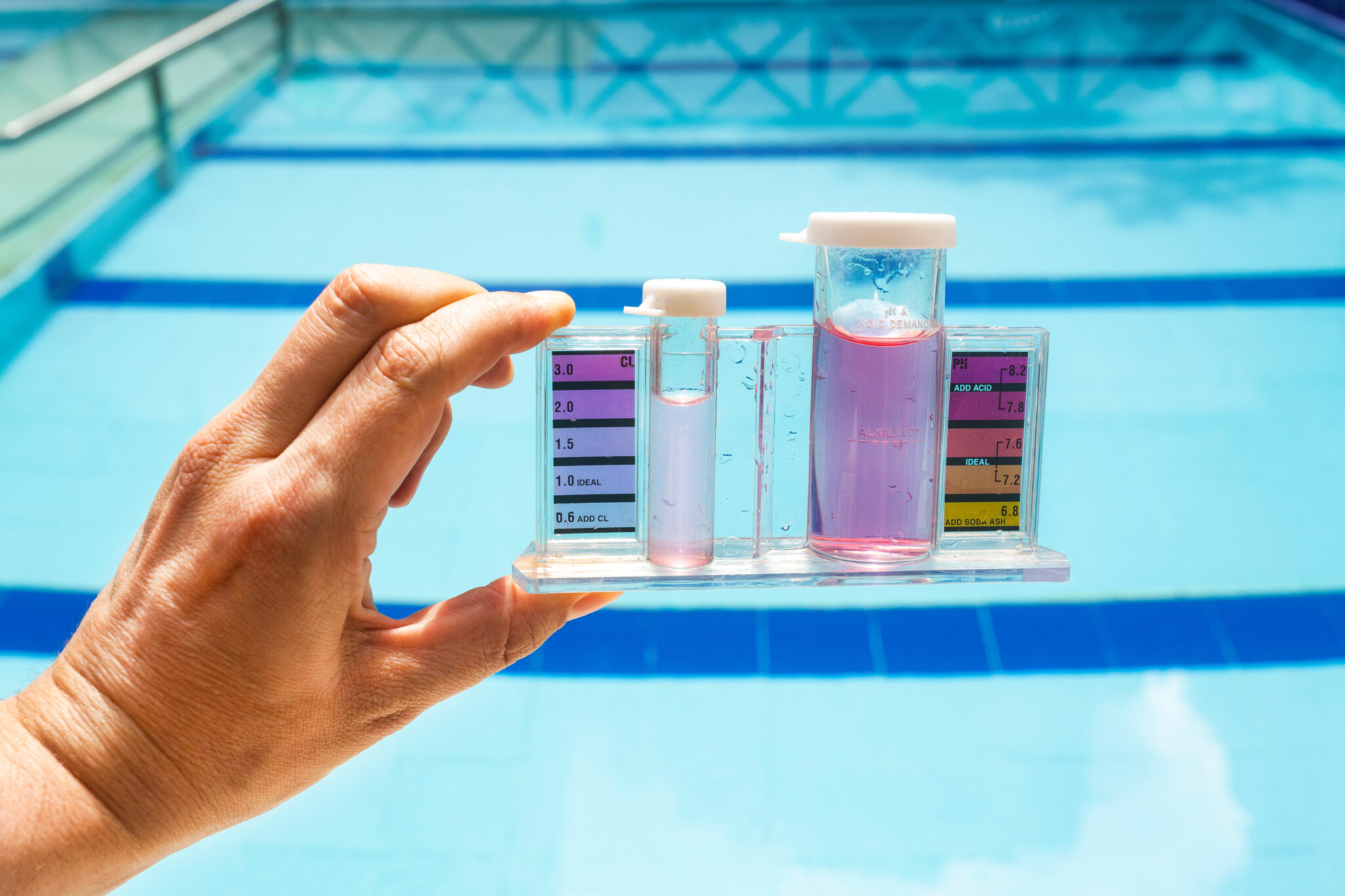
Pool owners understand the need to monitor the pH of the water. But what is pH in a pool? A pH reading shows how acidic or basic the water is. In chemistry, “pH” refers to the “potential of hydrogen,” essentially how concentrated hydrogen atoms are within a solution or, in this case, the water in a pool. Now, look at what causes high pH in pools and what signs of low pH in pools to watch out for.
What is pH in a Pool?
The scale for measuring pH ranges from 0 to 14. A “0” is the highest acidity, and 14 registers as the highest basicity, while seven is neutral. Pure water is 7, but the ideal pH level should be slightly basic. This is because the pH range for the human body falls between 7.2 and 7.6, where swimmers feel most comfortable.
This range is also gentler on equipment, such as pool liners and plumbing, which is why it’s so important to watch for signs of low pH in pool water. Acidic water also causes skin irritation, burning eyes, and other conditions. By understanding what causes high pH in pools, water can be kept from getting cloudy, an indicator of too much base.
What Causes Low pH in Pools & How to Adjust It
Pool owners must understand the signs of low pH. Low pH can irritate eyes and skin and erode plumbing.
Signs of low pH in pools include:
- Corrosion of any pool equipment exposed to water.
- Dry skin due to acidic water stripping the body’s natural oils.
- Irritation to eyes, mouth, nose, and skin.
- Reduction of chlorine effectiveness.
Multiple factors cause low pH, including rain and debris from storms. Raising pH just involves a simple chemical reaction.
Adjusting Low pH in Pools
It’s relatively easy to deal with the signs of low pH. Raising the water’s alkalinity in pools increases its pH, ideally ranging from 125 to 150 parts per million.
To adjust low pH in pools:
- Test chemical levels using test strips or kits; if the level is below 7.2, it should be raised.
- Calculate the water volume of the pool.
- Measure out the appropriate amount of chemicals.
- Add chemicals to the pool water.
- Wait at least an hour before testing again.
If testing still indicates low pH in the pool, this process should be repeated until the water reaches acceptable levels.
What Causes High pH in Pools & How to Adjust It
Understanding what causes high pH in pools also affects pool chemistry. High pH can render chlorine useless, creating a health hazard.
Signs of high pH in pools include:
- Additional chlorine makes no difference to pH.
- Filters and/or pipes clog up.
- Irritation of eyes and skin.
- Murkiness or cloudiness of pool water.
- Scales develop on pipes or filters, sometimes to the point they clog, affecting the filtration system and motor.
Though the causes of high pH in pools vary widely, they could result from improperly measured chemicals or natural alkalinity in the water. Fortunately, high pH in pools is readily repairable.
Adjusting High pH in Pools
High pH levels in pools can be hazardous to swimmers’ health, so it’s best to handle them sooner rather than later.
To adjust high pH in pools:
- Test chemical levels, and if they register too high, they need to be lowered; a pH above 7.6 should be dealt with, though the higher it is, the more urgent the action needed.
- Measure out chemicals and handle them carefully; typically, chemicals like muriatic acid or sodium bisulfate are used.
- Add chemicals carefully, though it is advisable to avoid days with high wind so as not to breathe in the chemicals.
- Wait 24 hours for chemicals to dissolve in the water before retesting.
If the pH is too high, this procedure should be repeated until an appropriate pH is reached.
Contact the Pool Experts at Halogen Supply
Maintaining your pool’s pH balance is crucial for ensuring swimmers’ health and safety and the longevity of pool equipment. Understanding what pH means can empower pool owners to make informed decisions about water treatment. By recognizing the causes of high pH levels and being vigilant for signs of low pH, you can proactively address water quality issues and enjoy a pristine swimming experience. For more than 70 years, Halogen Supply has been committed to providing top-tier solutions and equipment to maintain optimal pool pH levels. Contact us today to speak with our experienced team!
